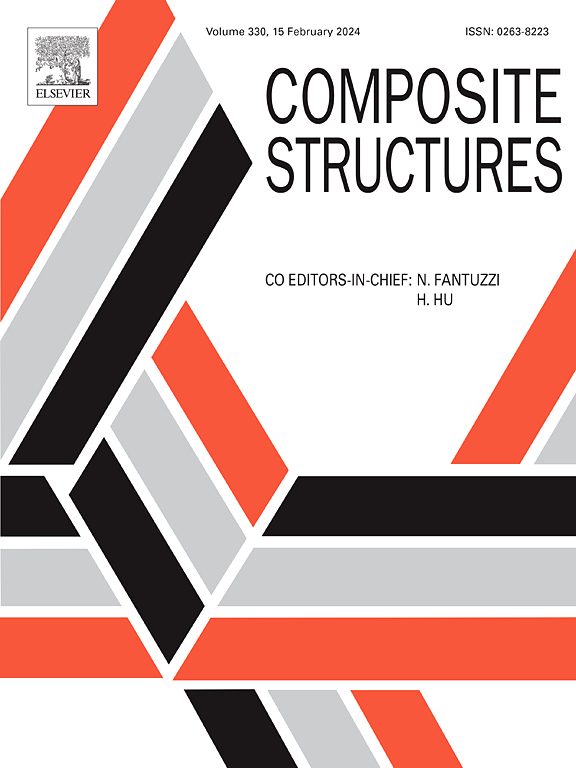In-depth tool wear analysis in drilling of CFRP-Ti stacks by DLC coated drills
IF 6.3
2区 材料科学
Q1 MATERIALS SCIENCE, COMPOSITES
引用次数: 0
Abstract
Spurred by the growing trend towards sustainability and use of green material alternatives, Carbon Fiber Reinforced Polymer paired with Titanium alloys (CFRP-Ti stacks) are employed in aerospace industry for their high strength-to-weight ratio and good galvanic corrosion resistance. However, production of holes for bolt or rivet connections, imperative for components assembly depicts unmatched difficulties in their machinability due to superior mechanical characteristics and distinct nature of stack components, causing rapid tool wear and compromised hole quality. In this work, in-depth tool wear analysis of Diamond-like-Carbon (DLC) coated drills were analysed periodically to evaluate tool wear growth and associated wear mechanism while drilling of CFRP-Ti stacks. Qualitative analysis was performed after drilling set number of holes by two DLC coated drills (DLC-Ar and DLC-Bn), and results compared with uncoated solid carbide (WC) drills tested under similar dry machining conditions. The wear progress was observed by SEM and EDX; and for extensive wear mechanism investigation, Focused Ion Beam (FIB) cross-sections were analysed. Moreover, morphological examination of etched drills after drilling experiment was performed to observe active cutting regions for overall damage extent, gain insight about coating reminiscences and underlying wear mechanism. The results demonstrate that DLC-Bn drill showed best performance with reduced thrust forces and torque, reduced wear of cutting edges and no fracture/chipping of drill corner compared to DLC-Ar and WC drill. Although, DLC-Ar drill does alleviate corner chipping but suffer premature coating failure, undergoes intense tribo-chemical wear, excessive removal of carbide grains and generation of highest thrust forces compared to WC drill.
求助全文
约1分钟内获得全文
求助全文
来源期刊

Composite Structures
工程技术-材料科学:复合
CiteScore
12.00
自引率
12.70%
发文量
1246
审稿时长
78 days
期刊介绍:
The past few decades have seen outstanding advances in the use of composite materials in structural applications. There can be little doubt that, within engineering circles, composites have revolutionised traditional design concepts and made possible an unparalleled range of new and exciting possibilities as viable materials for construction. Composite Structures, an International Journal, disseminates knowledge between users, manufacturers, designers and researchers involved in structures or structural components manufactured using composite materials.
The journal publishes papers which contribute to knowledge in the use of composite materials in engineering structures. Papers deal with design, research and development studies, experimental investigations, theoretical analysis and fabrication techniques relevant to the application of composites in load-bearing components for assemblies, ranging from individual components such as plates and shells to complete composite structures.
 求助内容:
求助内容: 应助结果提醒方式:
应助结果提醒方式:


